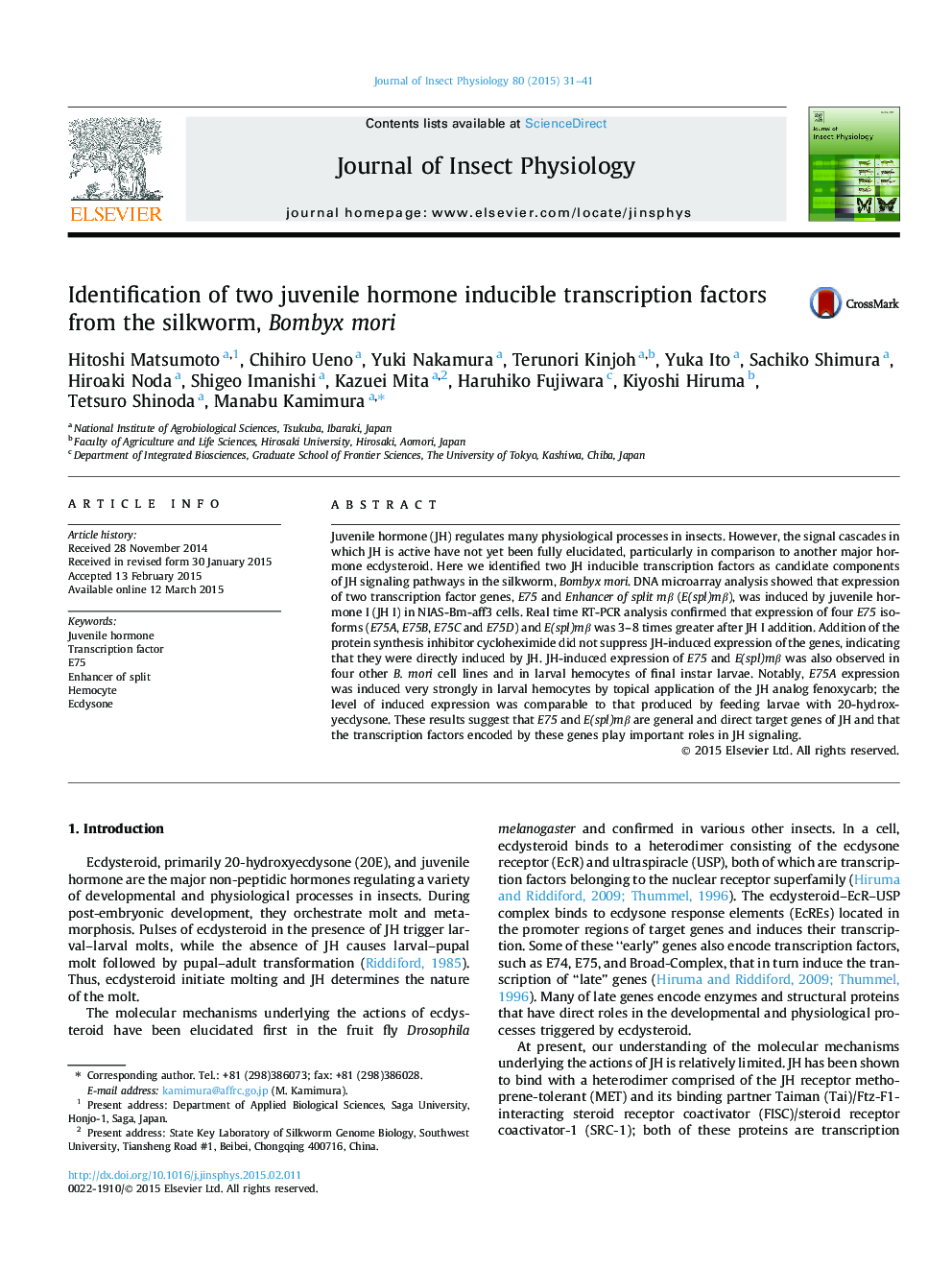| Article ID | Journal | Published Year | Pages | File Type |
|---|---|---|---|---|
| 2840314 | Journal of Insect Physiology | 2015 | 11 Pages |
•Expression of E75 and E(spl)mβ was induced by JH in Bombyx mori NIAS-Bm-aff3 cells.•E75 and E(spl)mβ were “primary” JH-inducible genes.•They were induced by JH in four other cell lines and larval hemocytes of B. mori.•These results suggest that the two genes have general roles in JH signaling.
Juvenile hormone (JH) regulates many physiological processes in insects. However, the signal cascades in which JH is active have not yet been fully elucidated, particularly in comparison to another major hormone ecdysteroid. Here we identified two JH inducible transcription factors as candidate components of JH signaling pathways in the silkworm, Bombyx mori. DNA microarray analysis showed that expression of two transcription factor genes, E75 and Enhancer of split mβ (E(spl)mβ), was induced by juvenile hormone I (JH I) in NIAS-Bm-aff3 cells. Real time RT-PCR analysis confirmed that expression of four E75 isoforms (E75A, E75B, E75C and E75D) and E(spl)mβ was 3–8 times greater after JH I addition. Addition of the protein synthesis inhibitor cycloheximide did not suppress JH-induced expression of the genes, indicating that they were directly induced by JH. JH-induced expression of E75 and E(spl)mβ was also observed in four other B. mori cell lines and in larval hemocytes of final instar larvae. Notably, E75A expression was induced very strongly in larval hemocytes by topical application of the JH analog fenoxycarb; the level of induced expression was comparable to that produced by feeding larvae with 20-hydroxyecdysone. These results suggest that E75 and E(spl)mβ are general and direct target genes of JH and that the transcription factors encoded by these genes play important roles in JH signaling.
Graphical abstractFigure optionsDownload full-size imageDownload as PowerPoint slide
